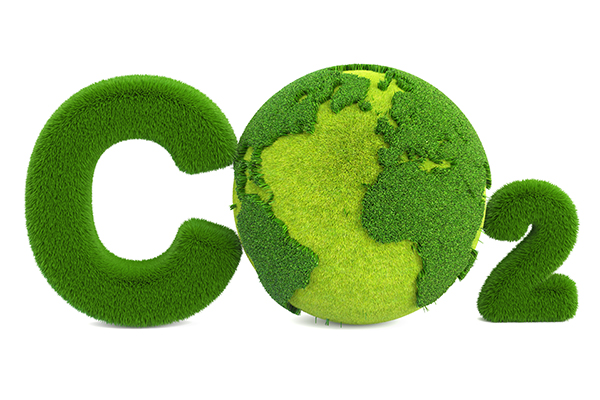Scientists from round the world are meeting in Germany to improve ways of making money from carbon dioxide.
They want to transform some of the CO2 that’s overheating the planet into products to benefit humanity.
They don’t claim the technology will solve climate change, but they say it will help.
Carbon dioxide is already being used in novel ways to create fuels, polymers, fertilisers, proteins, foams and building blocks.
Until recently, it was assumed that energy-intensive firms burning gas to fuel their processes would need eventually to capture the resulting carbon emissions and bury them underground.
This option is inefficient and costly, so the prospect of utilising some of the CO2 as a valuable raw material is exciting for business.
Katy Armstrong, manager of the Carbon Utilisation Centre at Sheffield University, put it this way: “We need products for the way we live – and everything we do has an impact.
“We need to manufacture our products without increasing CO2 emissions, and if we can use waste CO2 to help make them, so much the better.”
Many of the young carbon usage firms are actually carbon-negative: that means they take in more CO2 than they put out.
We visited three pioneering businesses in the UK which are already making money out of CO2.
Here are their recipes for success (or at least, the ones they will share with us).
Three success stories
CO2 to fertiliser: CCm Technologies, Swindon
Recipe: Put cow dung and maize into a bio-digester, where bacteria break them down and produce biogas to heat our homes.
Mix the left-over sludge with nutrient-rich wastes from the fertiliser industry, sewage plants, farms or the food industry.
Pump in CO2, which helps the nutrients bind to the sludge.
Product: High-grade fertiliser pellets that have soaked up more CO2 than they produced. The technology has already won export orders.
CO2 to beer bubbles: Strutt and Parker Farms, Suffolk
Recipe: Take horse muck and straw from Newmarket races. Put the smelly mess through a bio-digester (as above).
Extract biogas and CO2. Using advanced membranes, separate out food grade CO2.
Product: Clean CO2 that’s sold to a local brewery to put the fizz into lemonade and lager.
CO2 to building blocks: Carbon 8 Aggregates, Leeds
Recipe: Take ash from the chimney of a waste incinerator plant.
Mix in water and CO2 – then stand back… this procedure gets very hot.
The CO2 is permanently captured within the waste ash to form artificial limestone for building blocks and other purposes.
The process has the additional benefit of treating the ash that would otherwise be sent to landfill.
Product: blocks that have locked up CO2, whilst also reducing the need for carbon-intensive cement. The technology is winning exports.
These firms are pioneers in what’s known as the Circular Economy, in which wastes are turned into raw materials. The EU is trying to prompt all industry to adopt this principle.
How much CO2 can products absorb?
The big question is how much of the approximately 37 gigatonnes of CO2 emitted annually from our homes, cars, planes, offices and industries can be utilised by industry.
One report projected that seven gigatonnes a year of CO2 could be locked up into new products.
Katy Armstrong described this figure as hugely optimistic. But she said: “Every tonne that’s captured is a tonne that doesn’t heat the atmosphere, so let’s hope the industry thrives.”
SOURCE- BBC News















